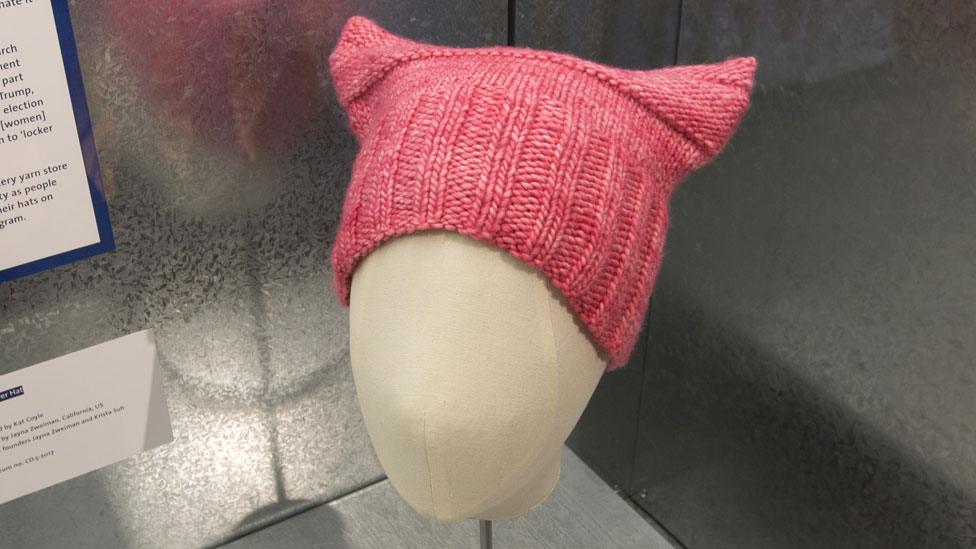Etching Irish abortion referendum into history
- Published

The Republic of Ireland's referendum to liberalise abortion laws in May was one of the most visual campaigns in the country's history.
It was another sign of massive societal change coming just three years after the country's same-sex marriage referendum.
Now artists, archivists and historians in Ireland have come together to capture the visual history of the pivotal campaign.
And it all began with an enthusiastic professor.
The day after the referendum, art history associate professor, Emily Mark-Fitzgerald, passed time on a bus from Belfast to Dublin by scrolling through Twitter.
She noticed that artists and historians were chatting about preserving the moment - how could they make sure all the banners and art from both sides were not lost?
Tapping into the zeitgeist
Dr Mark-Fitzgerald began typing on her laptop and by the time her bus reached Dublin the Archiving the 8th website was live.
Allow X content?
This article contains content provided by X. We ask for your permission before anything is loaded, as they may be using cookies and other technologies. You may want to read X’s cookie policy, external and privacy policy, external before accepting. To view this content choose ‘accept and continue’.
"I thought: 'Why don't I set up something really quick to centralise some of the information and to identify who is collecting what?'
"It all snowballed from there."
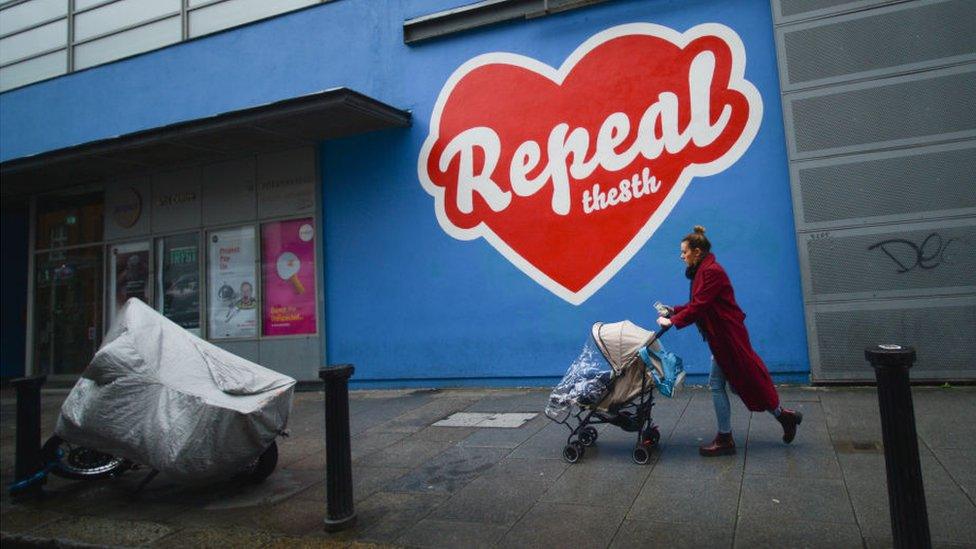
The mural by artist Maser at the Project Arts Centre was removed twice during the abortion campaign
Individuals and campaign groups started contacting the academic wanting to know to which organisation they could give their material so it could be safeguarded.
"I can't take anything myself personally, but I can put people in touch with the right archive or library," she said.
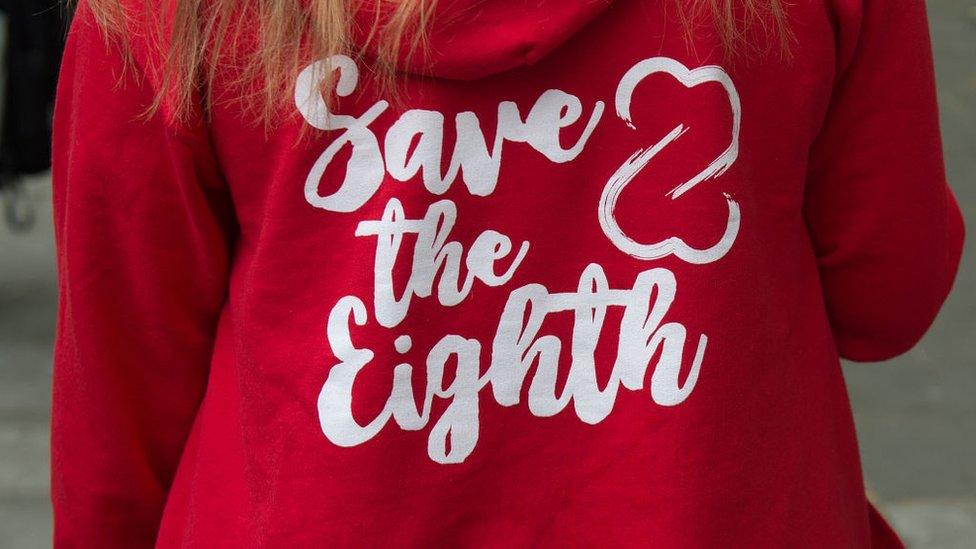
Campaign groups effectively used art as a means to communicate their message during the abortion referendum
Such an instant response is a new way of archiving, championed by the Victoria and Albert (V&A) museum in London which has set up a rapid-response team collecting items reflecting current global and political events.
In 2017, a pink "pussyhat" that was worn at the Women's March on Washington went on display at the V&A.
Other items in the museum's rapid-response collection include a Vote Leave campaign leaflet distributed in the run-up to the UK's EU referendum.

Savita Halappanavar died in October 2012 after she was refused an abortion during a miscarriage
The incredibly visual nature of the abortion campaign tapped into the zeitgeist and fuelled a national debate according to Dr Mark-Fitzgerald.
The Savita Halappanavar mural on Richmond Street in Dublin, painted by the artist Aches, became a focal point.
Ms Halappanavar died in a Galway hospital in October 2012 after she was refused an abortion during a miscarriage.
In the immediate aftermath of the referendum result, people left flowers and heartfelt post-it notes at the portrait.
The mural has since been removed for preservation and Dublin City Council Library and Archives are digitising the notes.
Changing digital landscape
During the abortion referendum campaign a mural painted by artist Maser on the Protect Arts Centre in Temple Bar was painted over twice.
"Certain elements became visually iconic and therefore persuasive pieces of work," Dr Mark-Fitzgerald said.
"People were upset that it was painted over twice, and the paradox is that, once it was covered over you began seeing it on T-shirts, jewellery, stickers, it proliferated further in secondary media."
Acknowledging that material reflecting the yes side in the referendum has been a lot more accessible Dr Mark-Fitzgerald said the challenge remains in making sure the no side is also represented.
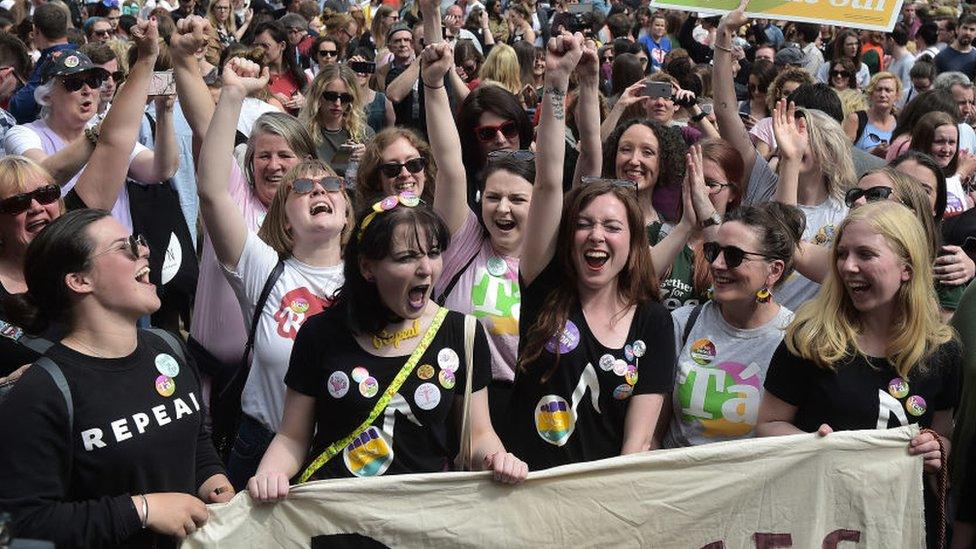
The REPEAL jumper was a visual signifier of a groundswell of people who were in support of repealing the Eighth Amendment, according to Dr Mark-Fitzgerald
Two months after that productive bus journey, the conversation is moving offline to the National Library of Ireland (NLI).
Academics, historians and archivists are meeting on Monday to figure out who has what and where.
Hosting the event, the NLI is aware of its role in preserving a snapshot of a national mood for future historians.
Capturing history
The library has always gathered election material - the "ephemeral information - the leaflets people get and then typically throw away. We store it, catalogue it and make it available to the public", explains Katherine McSharry, the NLI's head of outreach.
Since 2011, it has been archiving original digital election material in addition to leaflets and posters.
"We don't take a position on the outcome, we capture the record of how people were thinking, writing and talking about something at the moment that it happened," she added.
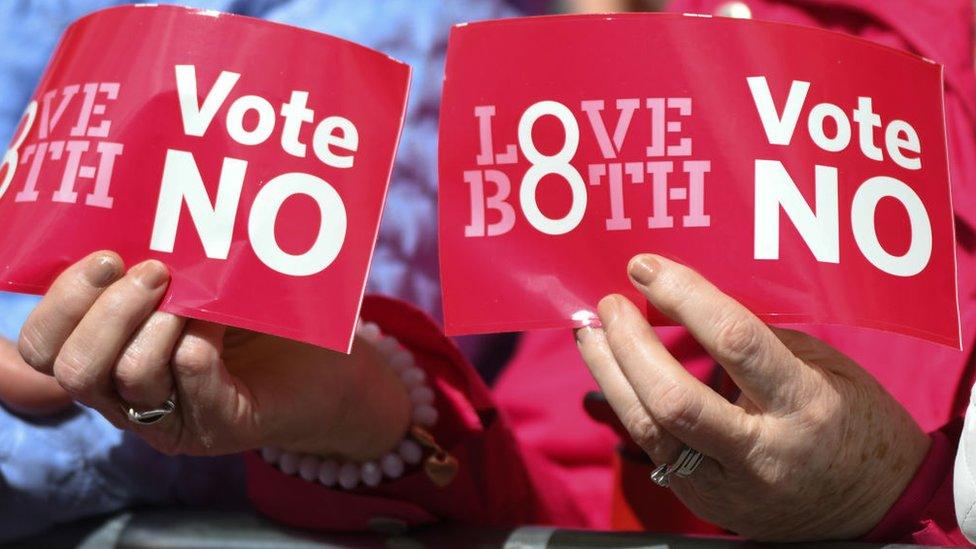
It's not only campaign leaflets historians are interested in; they're also keen to preserve the digital side of the campaign
Archivists at the NLI identified about 100 websites that they believe reflected the discourse on the abortion referendum.
"Within 12 months, 50% of all websites are either gone or totally changed," said Ms McSharry.
"That would mean in five years, 10 years or 20 years' time there wouldn't be any record of it at all."
The websites are archived in a way that allows the researcher to navigate the website exactly as it was on the day after the referendum.
Social media provided the platform to allow artists and campaigners to begin a conversation with archivists and historians about how the abortion referendum should be preserved.
"It was an uplifting and hopeful conversation. It was an opportunity for us to describe the activities that we at the NLI carry out on an ongoing basis," added Ms McSharry.
The cut and thrust of Ireland's 2018 abortion referendum has now been captured in all its forms from paper to video to tweet.
The digital age has allowed academics and artists to share their snapshot of what was a historic moment in time.
- Published26 May 2018

- Published26 May 2018
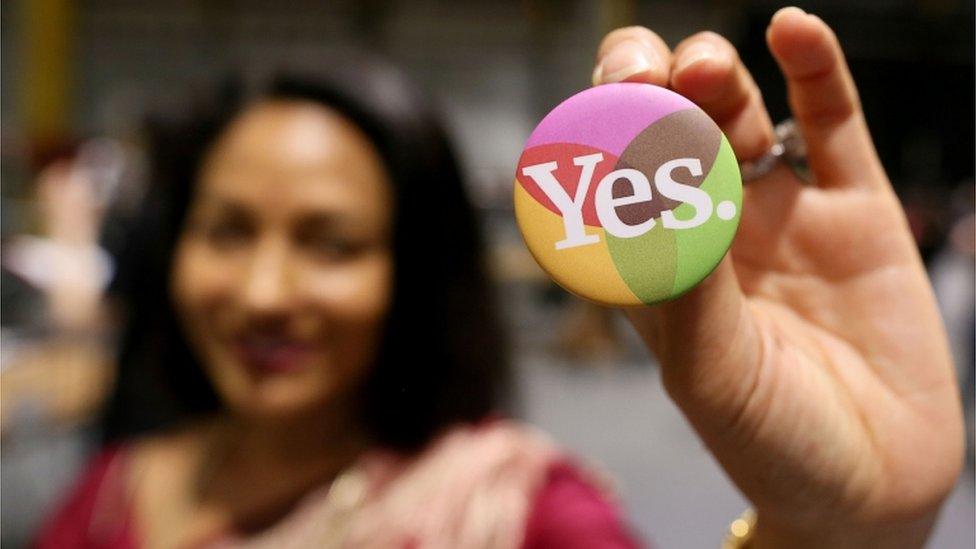
- Published26 May 2018

- Published26 May 2018
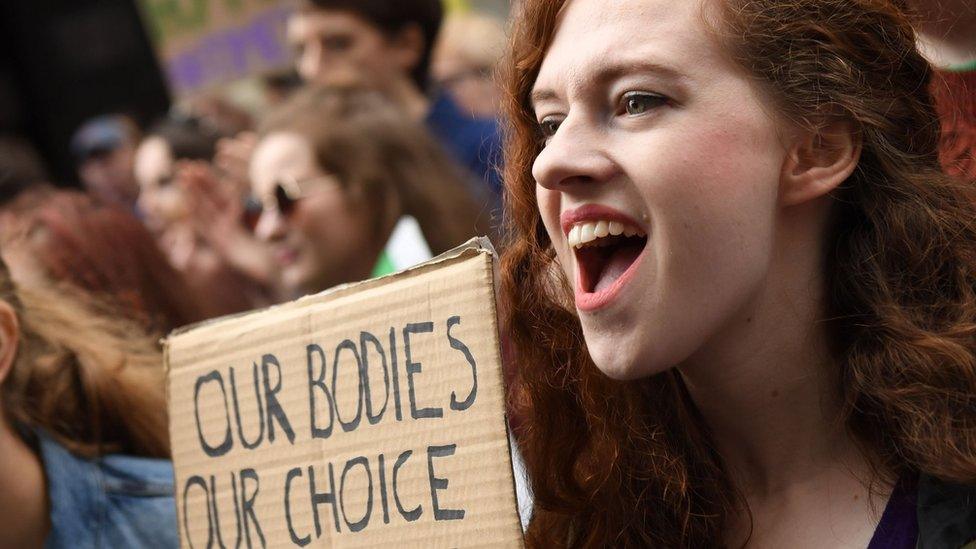
- Published8 March 2017
